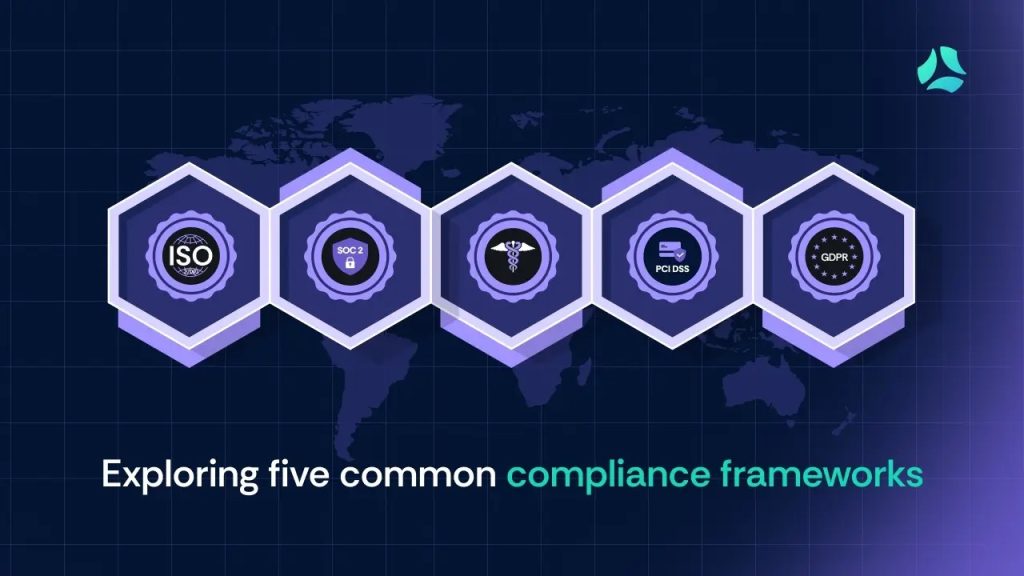In today’s complex regulatory landscape, a one‑size‑fits‑all solution rarely works. Compliance templates can be a great starting point, but unless you tailor them to match your industry’s specific requirements, they risk being irrelevant or incomplete. In this article, I’ll walk through why and how to customize compliance templates so they truly work for sectors like healthcare, finance, energy, and more.
Why Sector‑Specific Customization Matters
Every regulated industry has unique risks. Healthcare deals with patient privacy. Finance handles fraud and money laundering. Energy must focus on safety and environmental standards. Relying on generic templates is like fitting square pegs into round holes. It leads to compliance gaps and unnecessary risk.
Early customization can save time and money. Meanwhile, educated use of an outsourced compliance function can improve risk outcomes by 36%, signaling that sector‑specific expertise proves essential. These numbers show that firms recognize the need for flexible, industry‑aware tools, but often need help making them work.
Laying the Groundwork
Start by laying the groundworks for customization:
Understanding Your Regulatory Landscape
Start by mapping all applicable laws, standards, and guidelines. For instance, a bank must manage SOX, GLBA, and PCI‑DSS. A hospital needs HIPAA, HITECH, and HITRUST. You must know which apply to your operations. A regulatory checklist can help. Then cluster them by theme and highlight overlaps.
Choosing a Strong Starting Point
Refer to a proven compliance framework as your base. These might include ISO 27001, NIST, or sector-specific guidelines, such as NERC CIP in the energy sector or FAA standards in aviation. Your compliance templates will usually stem from these core frameworks. The aim is not to follow them blindly, but to use their structure to build a customized approach.
Three Steps to Effective Customization
These 3 steps are vital to effective customization:
Map Controls to Sector Needs
Take each requirement in your base template and ask: “How does this apply in our industry?”
For instance, a finance firm’s control for data encryption must consider SEC rules, customer notifications in case of a breach, and the firm’s internal audit processes. In healthcare, audit logs alone are not enough. The template must also include retention periods, patient consent processes, and interaction with electronic health record systems.
Add or Remove Actions
Templates may include general checkboxes: “Encryption enabled” or “Policy reviewed annually.” That is not enough. You need industry‑specific tasks. In energy, you may need inspections tied to OSHA or EPA rules. In finance, add filing procedures for suspicious activity reports (SARs). In healthcare, build training modules on PHI handling.
At the same time, discard irrelevant portions. A manufacturing firm need not apply GDPR controls aimed at EU citizens if it operates only in the U.S. Removing unnecessary controls keeps the template clean and less error‑prone.
Integrate Language and Workflow
Every team in your organization must understand and use the templates. Replace vague terms like “sensitive data” with precise terms such as “patient genetic data” or “customer account numbers.” Use language your staff would recognize. Also, ensure to update workflows. For finance, include steps for submitting to your BSA officer. For healthcare, specify workflows for revise‑and‑sign procedures governed by your institutional compliance committee.
Advanced Strategies for Industry Fit
These advanced strategies ensure your compliance templates are an industry fit:
Group Controls by Function and Ownership (h3)
Provide context on where each requirement sits within the organization. In healthcare, bucket controls are under clinical compliance, IT security, and legal/pharmaceutical oversight. In finance, group them by trading, customer due diligence, and cybersecurity. Assign each control a clear owner, like a manager, department, or role, to improve accountability.
Build in Sector‑Specific Evidence Requirements (h3)
Templates should stand up to an audit. In the energy sector, you may need emission records, maintenance logs, or incident investigations. In finance, attach trade logs, SAR filings, or audit trails. In healthcare, include training certificates and policy attestation logs. Make sure each entry in the template links to verifiable proof.
Embed a Review and Update Mechanism (h3)
Regulations change. The California Consumer Privacy Act and CPRA saw new bills in 2023 alone. You must review compliance templates regularly. Set up a schedule: perhaps quarterly for high‑risk industries and annually for others. Include versioning, note when templates are updated, by whom, and why.
Sector Examples: A Closer Look
Here is how customization applies across sectors:
Healthcare: Protecting Patient Information
HIPAA and HITECH require specific safeguards around PHI. You must customize templates to include:
- Defined retention periods
- Processes for Business Associate Agreements
- Breach notification timelines
- PHI disposal practices
The compliance templates here must clearly define who handles PHI, how it’s logged, and how patients are informed. Embed incident checklists and legal review steps.
Finance: Anti‑Money Laundering and Cybersecurity
A finance firm’s controls should include:
- Customer due diligence steps
- Transaction monitoring triggers
- Suspicious Activity Report (SAR) submission process
- Cyber incident response tied to SEC/OCC rules
Turn generic encryption controls into explicit “Encrypt customer account data in transit and at rest using AES‑256.” Add guidance for attaching evidence, such as sample logs and SAR receipts.
Energy: Safety, Environment, and Equipment Integrity
Operators must handle:
- Scheduled safety inspections
- Environmental emission reports
- Incident investigation protocols
Adapt templates to include task reminders tied to monitoring frequency, photo, and test outputs, and submission to regulators. Assign ownership across field teams, health & safety, and environmental leads.
Tools and Technology
These tools and technologies help make customizing compliance templates efficient:
Embedding Automation and Workflow
Modern GRC tools allow you to bring compliance templates to life. You can attach control descriptions, assign owners, set due dates, and track status all in one place. When a field engineer signs off on an inspection, automated logs should be created and evidence stored. This saves effort, and audits turn from headaches into routine tasks.
Continuous Monitoring and Updates
As regulations change, such as new AI guidance in financial markets, automated alerts should trigger template reviews. Platform tools can pull regulatory feeds and recommend updates. Pair that with your internal policy review schedule, and your templates remain current and defensible.
Training and Communication Layers
Don’t just publish templates, teach them. Embed help text and links to deeper guides. Run brief training sessions when your templates update, and track acknowledgements. This ensures staff buy-in and understand exactly what to do.
Benefits of Customized Templates
Customized templates bring the following benefits:
Improved Compliance and Audit Readiness
Audit time shrinks when each control has clear evidence. If a regulator asks for proof of encryption, you can point straight to the control and attached logs. Customized compliance templates build that evidence trail for you.
Reduced Operational Noise
Teams can skip irrelevant checks and focus on what’s truly critical. No more wasting time filling in unrelated sections. This reduces frustration and improves compliance completion rates.
Faster Response to Change
Template updates roll out faster than it would be to rebuild from scratch. For example, when CPRA took effect in California, firms with customizable templates could add new obligations in days, not months.
Cross‑Functional Alignment
Templates that articulate control ownership and workflow improve coordination between R&D, IT, HR, Legal, and Operations. Everyone knows who is responsible and what evidence they need, reducing finger‑pointing when compliance issues arise.
Best Practices for Ongoing Success
Keep in mind these best practices for ongoing success in compliance:
Embed Versioning and Change Control
Treat compliance templates like code. Include date stamps, authorship, change notes, and approval records. That way, you know why a control changed and when.
Collect Feedback from End Users
Periodically solicit input from teams like frontline staff, auditors, and managers. If a template section is unclear or too burdensome, refine it. Ease of use matters as much as compliance.
Leverage Regulatory Libraries
Regulation evolves. Use libraries or feeds from trusted providers to identify new requirements. Then update your templates accordingly.
Balance Standardization and Flexibility
Maintain a consistent template structure, including control ID, description, owner, frequency, and evidence link, across all sectors. But allow room for sector‑specific additions and fields. This balances ease of management with relevance.
Conclusion
Generic compliance templates are a starting point. Real compliance demands customization tailored to your industry. By mapping controls, adding sector‑specific actions, clarifying language, and integrating evidence workflows, you create tools that work in the real world. Customized compliance templates help reduce risk, prepare you for audits, and make regulatory change manageable. And most importantly, they help your organization retain focus on core operations, not compliance overhead.
Implement these steps once, then refine continuously. You’ll end up with living compliance tools that cross-reference industry rules, support audit readiness, and align your teams. That’s how you transform compliance from a box‑checking exercise into a business enabler.



